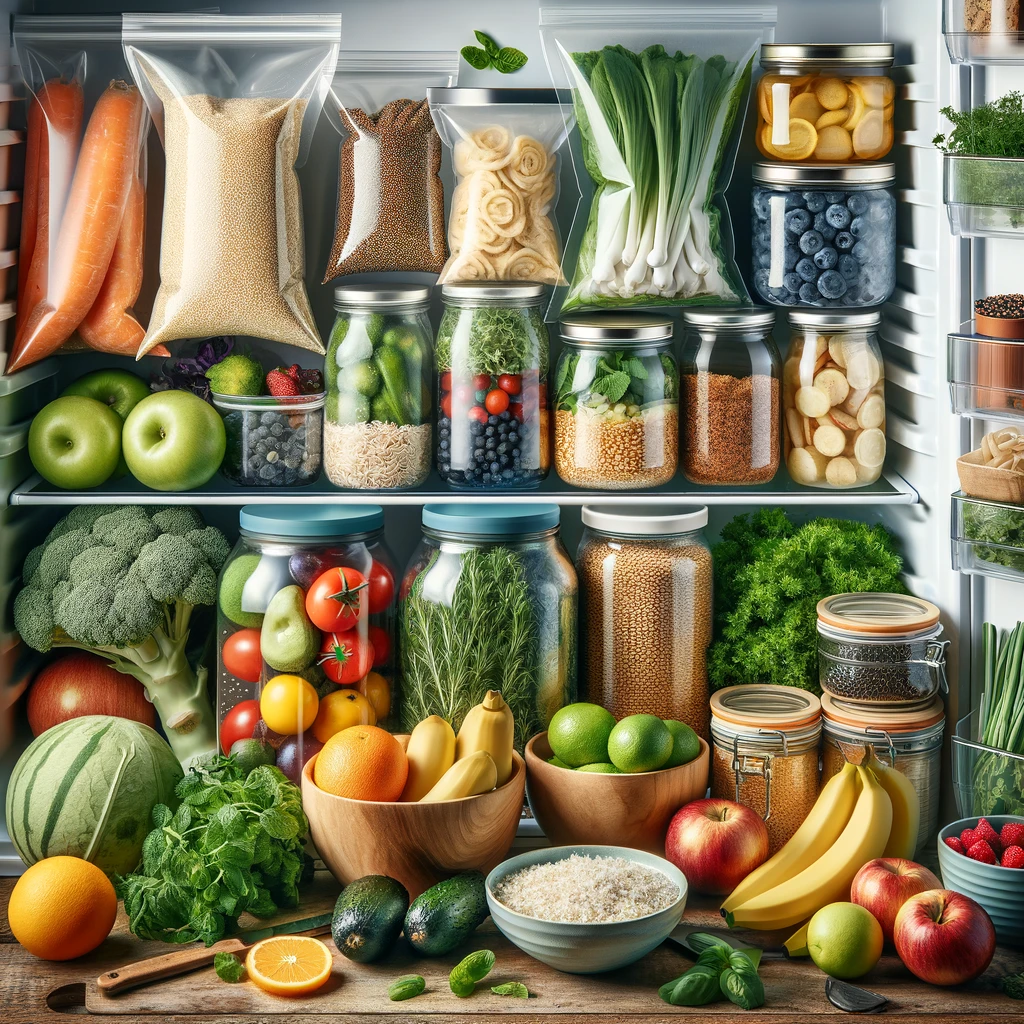
When it comes to maintaining a healthy diet, having fresh, readily available ingredients is key. But how do you keep your produce crisp and your meals tasty while minimizing waste? This guide will walk you through the essentials of food storage, ensuring your groceries go the distance and your meal prep is a breeze.
Clean and Store Produce Properly
**Lettuce and Leafy Greens:**
Start by giving your greens a good wash. Fill a sink with cold water, submerge the leaves, and gently swish them around. Once cleaned, pat them dry with a clean towel or use a salad spinner. To keep them fresh, store them in a plastic or reusable silicone bag with a piece of paper towel inside. The paper towel will absorb excess moisture, preventing the greens from wilting too quickly.
**Berries and Delicate Fruits:**
Berries should be washed just before eating to prevent them from becoming mushy. Store them in a single layer in a shallow container lined with paper towels. This setup helps keep them dry and extends their shelf life.
**Carrots and Celery:**
Trim the ends of carrots and celery, and store them in a container filled with water. Change the water every few days to keep them crisp. This method works wonders, especially if you love a good crunch in your salads or snacks.
Prepping for Convenience
**Cutting and Bagging:**
Dedicate some time to prepping your vegetables and fruits as soon as you bring them home. Cut bell peppers, cucumbers, and other sturdy veggies into bite-sized pieces and store them in clear containers. This way, you’re more likely to reach for a healthy snack or quickly throw together a salad.
**Herbs:**
Wrap herbs in a damp paper towel and place them in a resealable plastic bag. For longer storage, you can chop the herbs and freeze them in olive oil using an ice cube tray. These herb cubes can be popped into soups, stews, or sautés, adding fresh flavor to your dishes.
Maximizing Leftovers
**Increase Serving Sizes:**
When cooking, consider making larger batches. Not only does this save time, but it also means you’ll have leftovers that can be quickly reheated. Soups, stews, and casseroles are excellent candidates for this approach.
**Properly Storing Leftovers:**
Ensure leftovers are stored in airtight containers and labeled with the date. This practice helps you keep track of what needs to be eaten first, reducing the chances of food waste.
Freezing for the Future
**Meals and Ingredients:**
Freezing is a fantastic way to preserve food for future use. Cooked grains, proteins, and vegetables can all be frozen and then reheated with minimal effort. Portion meals into individual servings before freezing to make weeknight dinners even more convenient.
**Blanching Vegetables:**
To freeze vegetables, blanch them first. This process involves boiling the vegetables briefly, then plunging them into ice water to stop the cooking process. Blanching preserves the color, texture, and nutrients of the vegetables. Once blanched, dry them thoroughly, place them on a baking sheet to freeze individually, and then transfer them to a freezer bag.
**Bread and Baked Goods:**
Wrap bread tightly in plastic wrap and then in foil before freezing to prevent freezer burn. Slices of bread can be individually wrapped and pulled out as needed. Muffins, pancakes, and waffles can be frozen in a single layer on a baking sheet, then stored in a bag for easy reheating.
Taking the time to properly store your food not only keeps it fresher longer but also makes healthy eating more convenient. By washing, cutting, and bagging your produce, increasing serving sizes for leftovers, and utilizing your freezer wisely, you can reduce waste, save money, and ensure you always have fresh ingredients and meals at your fingertips. Happy eating!
